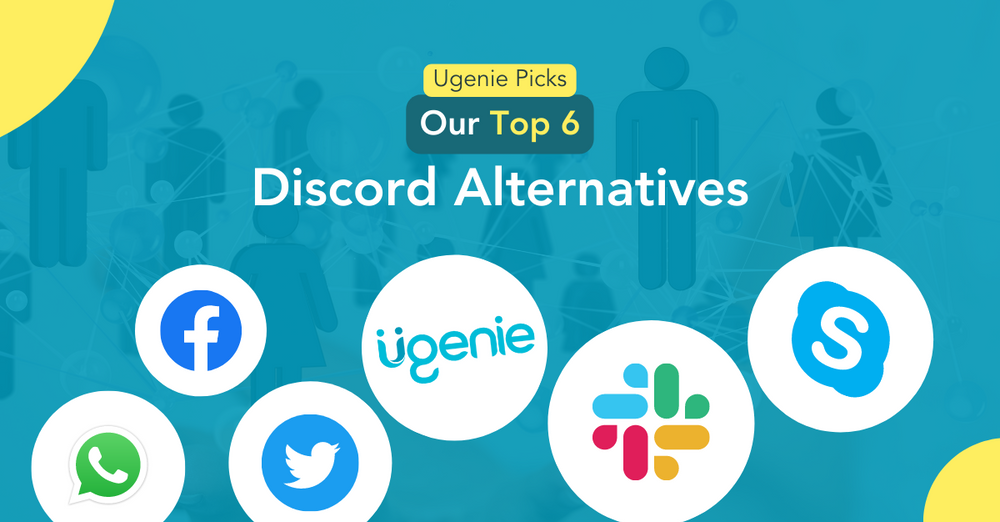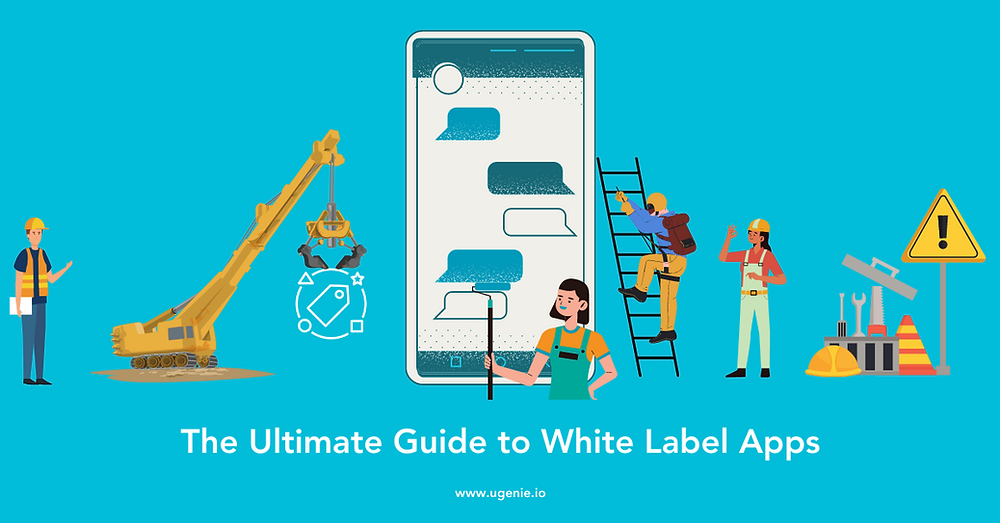
The guide to white label apps you've been looking for.
As the modern world continues to thrive with technology, we continue to see businesses migrating their online worlds to the comfort of an app. In today’s world, the average smartphone user engages with 10 apps a day, meaning the opportunity to capitalise on the surge couldn't be greater!
Keeping this in mind, it's bizarre to think there are still companies confined to their online site. Isn't it time everyone started looking to break way into the app store?
Perhaps that's because app development appears out of reach: it's time-consuming, costly and not confirmed successful. If only there were a way around these tribulations. Well, good news, there are, vis-à-vis white label apps!
At this juncture, you may have many questions, but not to worry, we can go through this together, at your pace.
What is a white label app?
In layman's terms, a white label app is a blueprint application built by a third-party company. Their purpose being reselling to businesses for them to rebrand as their own.
So a white app is essentially an easy solution to infiltrate technological marketing developments with the guidance and help of third-party software resellers.
There are two main types: single-tenancy and multi-tenancy. Though they're both a feasible option, first consider the company's individual needs, consider what both types can offer and then make an informed decision.
Single-Tenancy
Developers build single-tenancy apps per customer, providing creative control, customisation and flexibility appertaining to both UI and UX design.
This model keeps one (or a single) customer in mind upon developing the app, thus the whole infrastructure is fresh. Developers can reuse the basics of the already existing back-end code to speed up the process. This means the app is significantly new so the back-end code is able to isolate per client. The displayed flexibility allows changes to the infrastructure without affecting other clients.
Multi-Tenancy
The purpose of building multi-tenancy apps is to serve multiple customers without creating a new instance of the back-end infrastructure each time.
Clients are able to customise parts of the front end (UI design) to fit their brand. But the back-end code must remain standardised as any changes made to the core infrastructure will affect all tenants/clients.
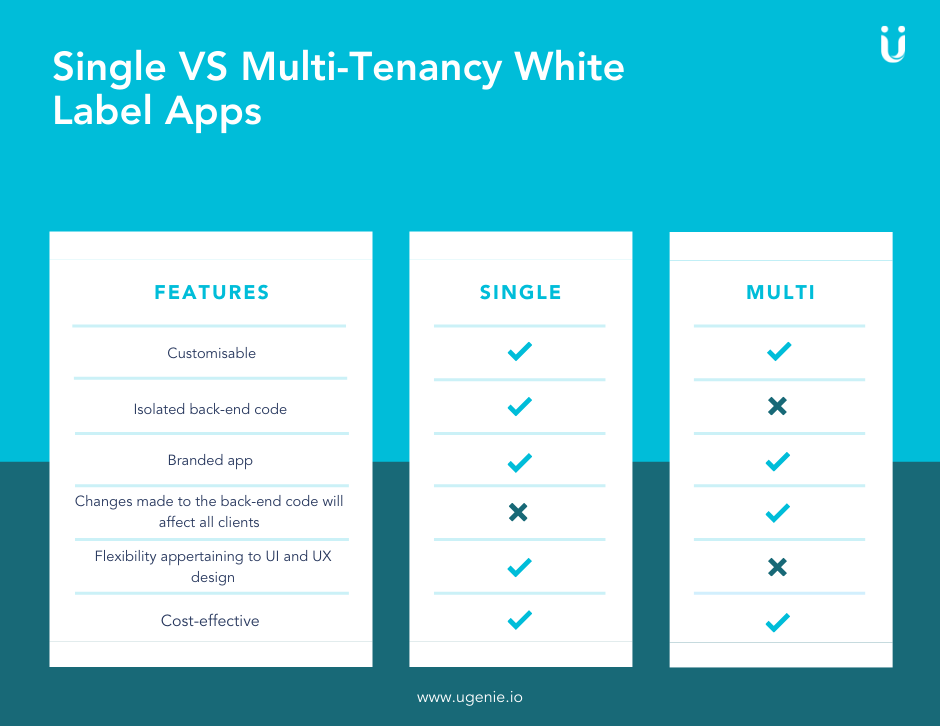
When did white label apps come about?
Private label branding is a global genius that's been steadily growing since the late 1900s. Now, with an advanced generation centred around mobile devices, it's almost certain to evolve to an even greater extent!
No wonder there's such high demand for white label solutions!
❓ Did You Know: The average person spends 4.8 hours a day on apps.
Why do businesses use white label apps?
As marketing strategies change, businesses are liable to stay on top of the game. At the moment this means creating an app for their customer base to flock and in turn increase revenue, engagement and feedback.
There's no need for a third-party developer to lead the process of building an app if there's an in-house team suited to the role. But for businesses that don't have that luxury and are looking for a quick turn-around, white label is the way forward.
In short, businesses use software resellers to optimise their time while gaining benefits that come with having a branded app: work smarter, not harder.
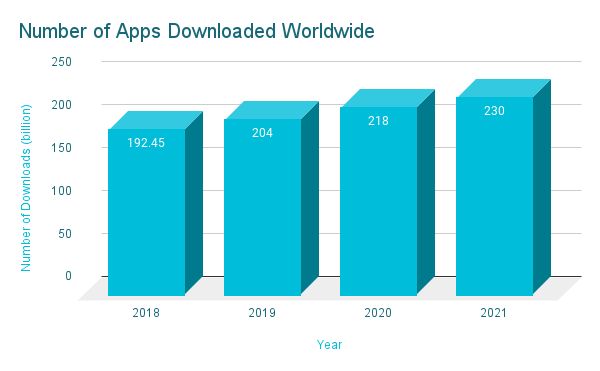
The Benefits of White Label Apps
To help you further understand why a white label solution could be perfect for you, we’ve compiled a list of their premiums. Whether it be ease of access or the quick turnaround time, we’ve got all advantages covered.
Lower investment of time and money than would be associated with in-house development.
The risks affiliated with app development, e.g. coding errors, are transferred to a third party, thus taking the pressure off the client.
A personalised app solidifies brand identity and increases recognition, creating a consistent experience. This is a sustainable option to build a customer base and ensure loyalty.
The app will be consistently maintained by third-party developers, so the client doesn't have to worry about updates, bug fixes or keeping code up-to-date.
Easy to access and use.
Customisable to provide the utmost individual brand experience.
Quick turnaround time, especially with the SaaS business-model (multi-tenancy app).
The opportunity to monetise content.
Direct marketing channel provided through the app's contents, e.g. product list, service specifications etc.
The Drawbacks of White Label Apps
Though a seemingly straightforward innovation, the idea presents its downfalls, but these are strongly outweighed by their better half.
The data of app users will be stored in a third-party server, which could cause issues of trust with the consumer.
Though white label indicates customisation, there will be limits to UI design.
App stores prohibit cloned apps, which white labels, in essence, are. This could restrict the white app from being listed, thus resulting in a loss of time, money and engagement.
Some white label providers won't be equipped for scalability or functions one may wish to add further down the line.
Despite the drawbacks, white labels are still a viable option when it comes to app development. As long as you do your research beforehand and don't rush into a deal, your white label management will run smoothly.
Successful White Label App Providers
It only takes a quick Google search to see how many companies are reselling apps and offering white label solutions today. We've picked some of our favourites to share with you, hopefully they'll give you a better insight into the endless possibilities of white apps.
KAI Platform, by Kasisto
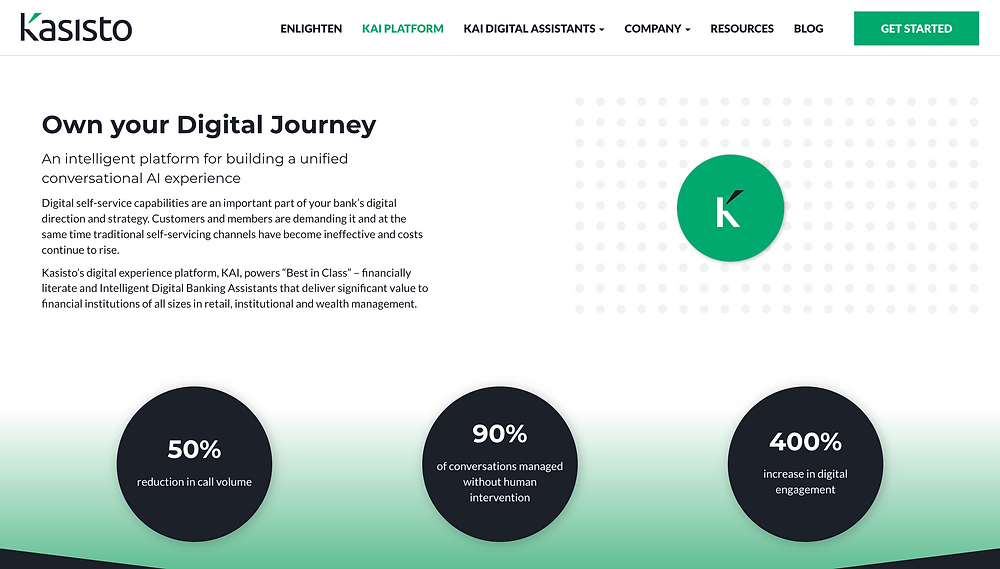
KAI Platform designs and builds multi-tenancy white label solutions for financial institutions, using APIs to build "compelling, intelligent and delightful customer experiences''. Their multilingual technology allows digital assistants to serve customers globally and in an efficient manner.
Optimised for scalability, performance and security, what more could clients need?
To no surprise, KAI are predicted market leaders in the USA.
Joyride
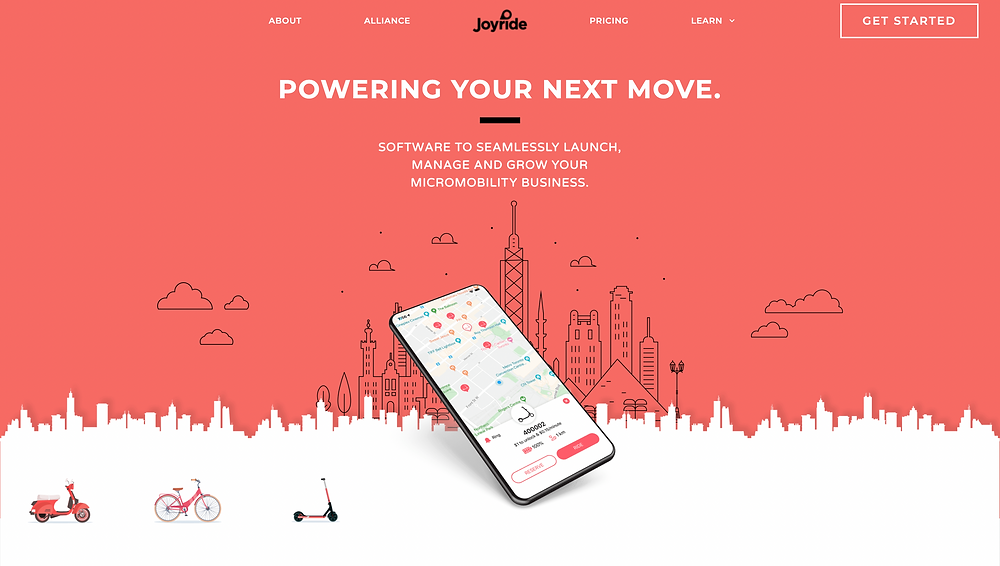
Joyride has created a solution to manage micromobility businesses. With a customisable dashboard, completely branded app and long-term vehicle rentals, micromobility has never seemed more appealing!
And as far as success goes, Joyride quotes “our partners have clocked millions of miles across 180 markets and five continents. We measure our success in their growth”, which we think is pretty cool!
Ugenie
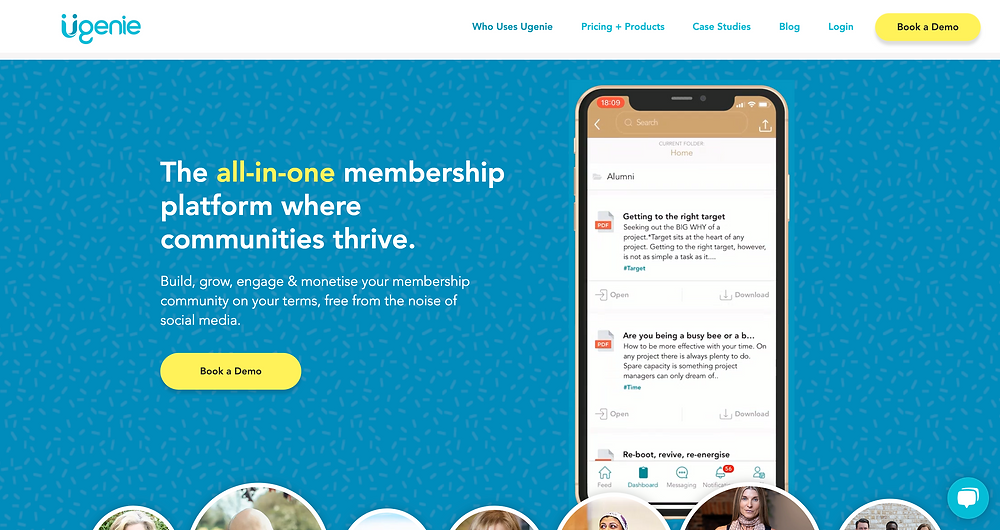
And of course, we can't forget about Ugenie, now we aren't picking favourites, but we think we're A-OK!
Our white label solution, uApp, allows you to take control of your own app, creating a direct link between you and your community. This is perfect for marketing opportunities and monetising branded content. All of this and all for your brand. Exciting - right?
We also offer a solution different to white label, uHubs, which includes our branding, little customisation and less control over your platform.
Both options offer the same support and features. But between you and me, building brand identity that's truly yours and only yours, is much more beneficial and fun!
Feel free to book a demo, or head over to our blog to learn more about our services.
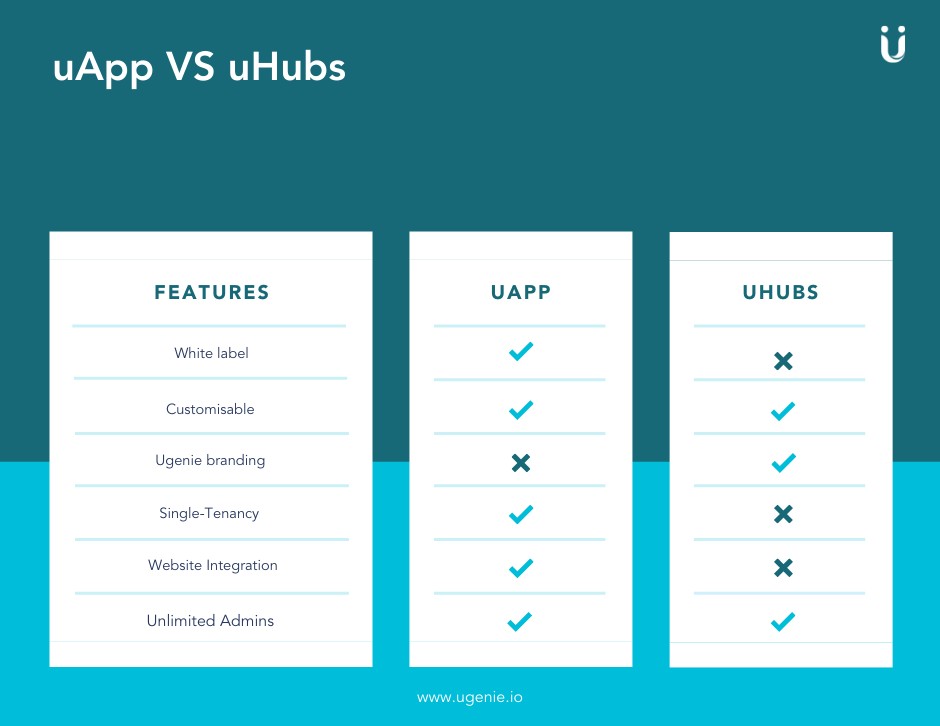
You can see a full list of features on our site equipped with pricing, product differences and guidance. Choose the right solution for your community.
Why white label is a fantastic route for membership businesses
White label is a better alternative to a third-party membership platform if you want more control over your community, brand and identity. As discussed previously, there are many benefits of using third-party developers, all of which apply to community managers.
The main advantages that resonate with regard to membership businesses are time efficiency and cost-effectiveness
As a community manager, we're sure you don't have the time to build your own app. Then there are the costs that come with running a business, especially in the first stages and when starting out small. Hiring someone to build you an app from the ground up may not be a viable option, hence white label being the perfect substitute!
For membership businesses, the flexibility apps allow for members to access content on the go from the simple tap of their home screen. Watch how your engagement and ROI grow within a few short months of deploying your membership app.
❓ Did You Know: 89% of US Marketers have reported an increase in revenue after implementing personalised apps.
So there you have it, everything you need to know about the emergence and usability of white label apps. Book your demo with us today, go on, jump on the bandwagon!
Share this
You May Also Like
These Related Stories

The 5 Best Online Community Platforms in 2023

Essential Technology For Your Membership Community
